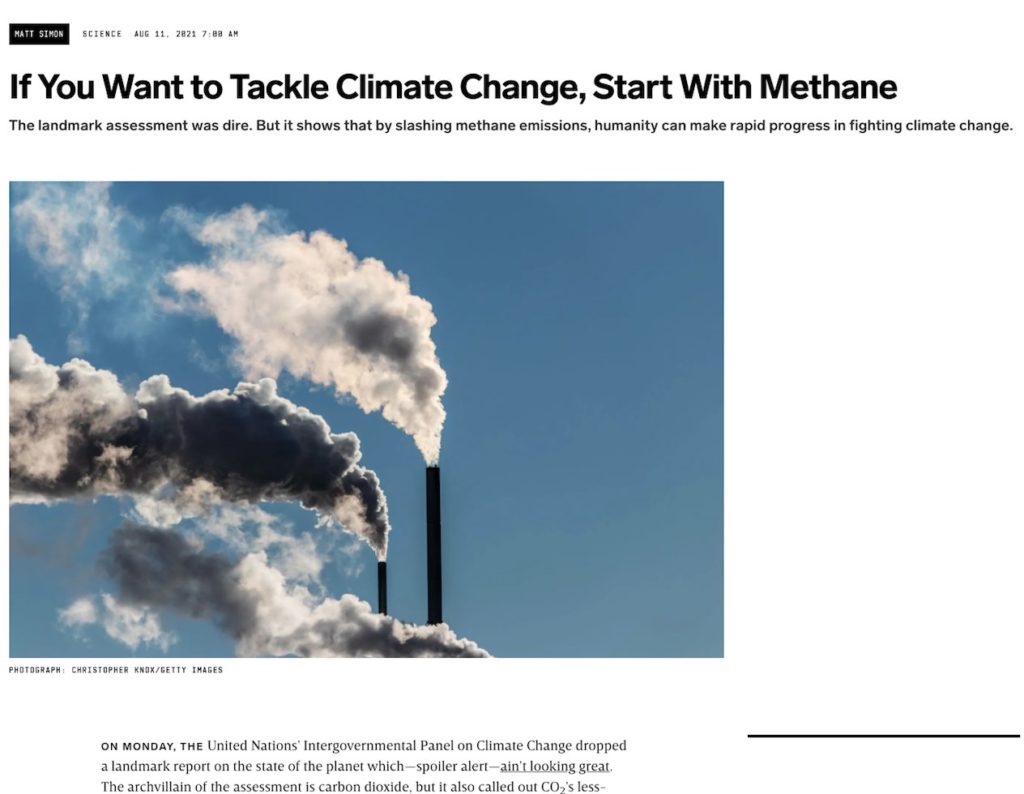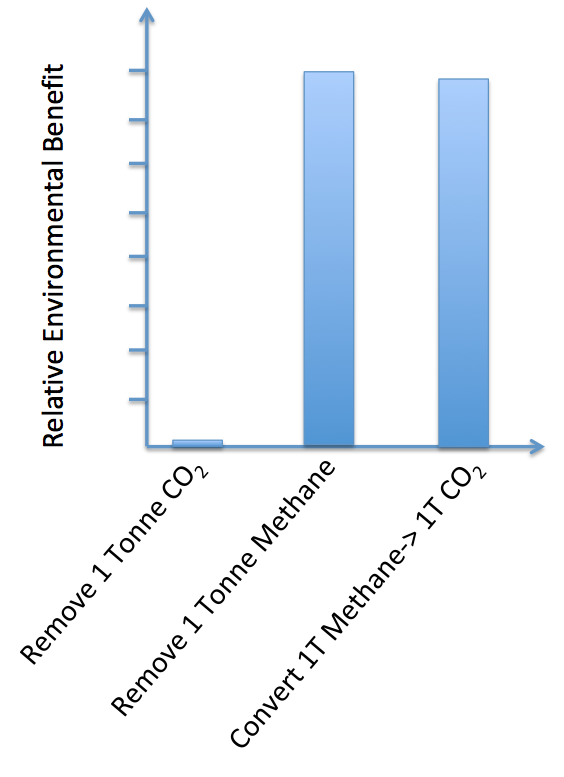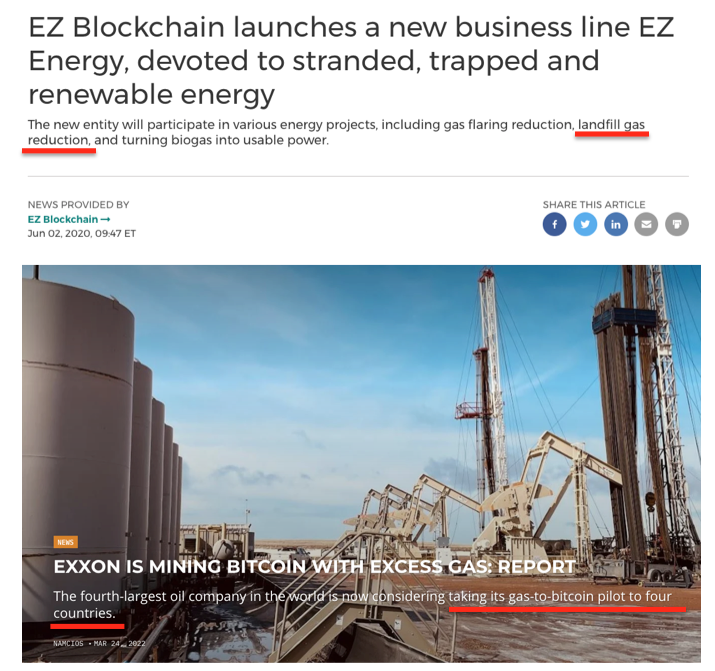Bitcoin mining can reduce our global emissions by up to 8% by 2030, simply by converting the world’s wasted and dangerous methane emissions into 80x less harmful emissions.

First some background. Around 20% of all our GHG emissions are from methane.
(This graph says 17.4%, but subsequent NASA data reveals that’s been underestimated. More on that later).

According to UNEP, “Human-caused methane emissions could be reduced up to 45% in 10 years. This would avert ~0.3°C of global warming by 2045. Methane reductions must [accompany] decarbonizing the energy system” i.e. “without slashing methane emissions, NGMI”
Why? – Well for starters – methane has more than 80 times the warming power of CO2 over its first 20 years in the atmosphere.
That means removing a tonne of Methane is 80x more effective than removing a tonne of CO2. Oxford Martin claim we could achieve that with a “global diet that relies less on meat” which would “reduce greenhouse gas emissions by 2/3 and climate damages of $1.5 trillion”
Since that’s not something Bitcoin can influence, I’ll skip to the #2 way, which Bitcoin can influence: converting methane into CO2. You do that by finding leaking methane and cleanly burning it to generate electricity.
By doing that you get a +84 point for removing methane, but 1 T methane produces 2.75 T methane when burnt. So you get 84/2.75 benefit. In other words, combusting methane is a factor of 30x less warming than letting methane simply escape into the atmosphere.

This is not a “get out of jail” card. We need to do both methane and CO2 reduction together. While methane is more lethal, CO2 is much more prevalent. So reducing our emissions of each by 50% is paramount.
Here’s the problem – outside agriculture the biggest sources of methane emissions from human activity are landfills and the oil&gas industry.
Getting natural gas to users requires gas pipelines. Problem: these take 3-4 years to build & cost $3.8M/mile. For remote oilfields & landfills, that’s seldom economic. Soberingly, we don’t have 3-4 years to wait. IPCC says unless we start now, we won’t hit our 2030 goals
Happily, there is now one, and only one user who can not only use but pay for the electricity generated from both flared/vented gas from oil fields & landfill gas. They don’t need a gas pipeline built. They’ll happily co-locate in an oil field or right next to a landfill.
These “unfussy eaters” are our Bitcoin miners. And they can be our salvation. Here’s why they matter so much.
Between 2020-21, NASA aerial data told us we’d underestimated oil & gas methane emissions by 40% and Landfill gas by a whopping 127%. Translation: methane is much worse than we think, and we’re screwed if we can’t get rid of it fast.

Together, if Bitcoin miners were used throughout the world’s oilfields & landfills, they’d reduce our global emissions by up to 8.5%. 1.5% for oil fields; 7% for landfills.
Bitcoin miners are the only ones who’ve stepped up to say “we can solve this problem at scale”
This is not theory. It’s begun. EZ Blockchain recently announced its intent to mine with landfill gas. Exxon has already successfully piloted its 1st Bitcoin mining operation from flared gas and is now considering ramping up into 4 more countries.

Some may say, “It’ll take the focus off drilling for less oil”. Unlikely. That’s dictated by economic & geopolitical factors. Others may say “It gives oil companies more $” This misses a subtlety: that’s $ from reducing emissions: another step to a cleaner business model
We’re all in this together. We need to do everything possible at once. To neglect this “right under our nose” way to slash GHGs based on past emotional aversion to oil companies is chauvinistic folly. Bitcoin mining is the only way we can do this.
So let’s do it.
Original Twitter Post: 29 Apr 2022
0/16
— Daniel Batten (@DSBatten) April 29, 2022
BREAKING: Bitcoin mining can slash methane emissions by 2030.
Bitcoin mining can reduce our global emissions by up to 8% by 2030, simply by converting the world’s wasted and dangerous methane emissions into 80x less harmful emissions. pic.twitter.com/KKEoBnfsGj
Note: Since publishing this post, we did a detailed analysis of the Landfill and Flared/Vented Gas opportunity, and found that Bitcoin mining of these sources can remove 5.32% of all CO2-eq emissions (0.94% from vented/flared gas, and 4.38% from landfills). The number is lower because we removed areas that may be harder to mine for political, topographical, economic or other factors.
